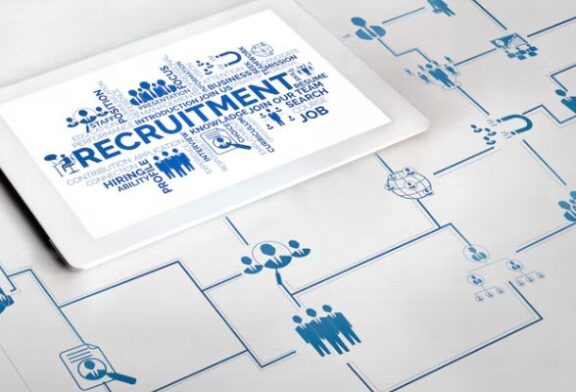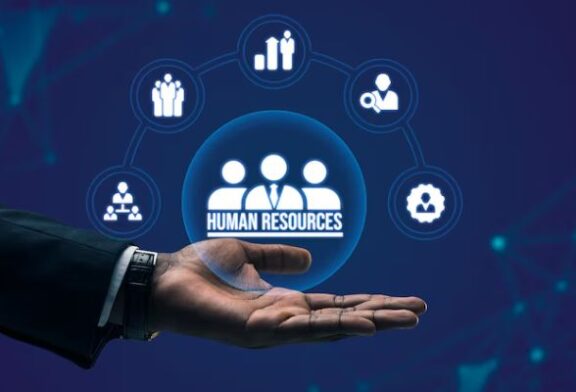The coronavirus pandemic and subsequent lockdown have affected millions of businesses in a variety of ways. Whether your company closed down its offices entirely and furloughed all staff, or made the swift transition to all employees working remotely, it’s now time to prepare to return to work.
Read on to discover how your employees can return to work safely, following the best practices and procedures necessary to adhere to the government’s guidance, make the relevant modifications to your office space, and follow up via your performance management tools so that everyone stays in the loop.
Clarify the current guidance
Before proceeding with risk assessments and putting in place a plan of action for returning to work, it’s imperative that HR leaders and managers are clear as to the current government guidance regarding working safely during the COVID-19 pandemic. Rates of infection, new cases and other unpredictable factors have the potential to change the official stance on how businesses should be operating, so regularly checking the government’s website outlining their recommendations is essential.
Once the guidance on risk assessment, who should attend work, how to manage social distancing for employees, customers and other visitors, and the recommendations for hygiene and the use of PPE is understood, HR leaders can begin the process of assessment and implementation of these best practices.
Conduct a risk assessment
According to the government’s Health and Safety Executive, there are several key questions that need to be addressed when carrying out a risk assessment of your company’s workplace.
These are:
- What are the hazards?
- Who might be harmed and how?
- What are you already doing to control the risks?
- What further action do you need to take to control the risks?
- Who needs to carry out the action?
- When is the action needed by?
When taking these questions into consideration and compiling your own risk assessment structure, it is important to note that the government warns against simply adopting the example risk assessment templates provided on the Health and Safety Executive website, and instead to make sure you factor in the specific hazards and controls your business requires.
Once the risks have been assessed HR leaders should ensure that these are thoroughly documented and shared with the appropriate members of staff responsible for implementing any changes to the work environment. Remember that the COVID-19 emergency is a constantly evolving concern, so monitoring the results should be viewed as a continuous process.
Consider establishing pandemic response teams
Establishing individuals and team members to be responsible for amplifying communications from HR to the wider workforce can be achieved through the creation of a pandemic response team. These employees can be kept in the loop about any updates to your policies on returning to work via an internal communications platform.
The role of these teams is to both implement and respond to challenges faced from the return to work plan, observe how effective or otherwise the measures implemented are, understand the responsibilities of managers, supervisors and employees, and provide feedback to HR as and when necessary.
These pandemic response teams can also be flagged in your performance management software so that employees are aware of these points of contact should any issues arise.
Modify the workplace for social distancing measures
Returning to work as the lockdown begins to ease requires implementing the necessary social distancing measures to ensure the safety of your workforce. These measures will dictate in part the ability for your workforce to return full or part-time, and how your company can structure employees and teams to coordinate a schedule that mitigates any potential risks.
Mitigation measures advised by the UK government include:
- keep any activity times requiring more than one person as short as possible
- make sure you install screens or barriers to separate people from one another
- Avoid face-to-face working when possible – instead, set up back-to-back or side-to-side arrangements
- Set up “fixed teams or partnering” to limit the number of people a given employee will work with
Once you have finalised and implemented these changes to the workplace, send any updated floor plans to staff via your internal communications platform before they return to the office so that they are prepared.
Establish hygiene protocols
The provision of personal protection equipment (PPE), for instance, gloves, masks and anti-viral hand gels also need to be considered before your staff return to work. If you intend to require the use of PPE in the workplace, clearly outlining the circumstances in which employees need to use them is essential as part of your company’s return to work procedures.
Consider sending out bulletins to remind staff periodically of these measures to help ensure that regular and effective handwashing takes place while making sure the offices themselves are given a regular deep-clean – including for any equipment such as monitors, phones and keyboards – to minimize the potential spread of any infections.

Communicate procedures to employees
HR leaders and managers should make full use of their performance management systems to highlight all procedures for employees returning to work to follow. Clear documentation should be sent to all employees covering social distancing in the workplace along with clarification of hygiene best practices.
Companies can also use their internal cultural branding to help amplify the message of prioritising safety in the workplace so that it remains front and centre, while any immediate or short-term updates to procedures and best practices should be sent directly to employees using push notifications or critical alerts.
Give your employees the support they need
Before employees come back to the office, it’s important for HR leaders and managers to take into consideration the psychological impact the pandemic lockdown may have had on their state of mind. Some people will have experienced higher levels of anxiety during lockdown than others, while challenges such as child care, loss of family members, financial concerns, and domestic stress are all common experiences during lockdown.
Giving your employees the emotional support and breathing room they need means having honest conversations with them before planning their return. Some may not be comfortable yet with the idea of commuting and returning to work, or may have circumstances that will prevent them from doing so full time.
Conversations with staff are a vital part of the digital re-orientation process to ensure any issues are addressed. Consider asking the following questions:
- How has life been for you during lockdown?
- Are you comfortable returning to work?
- Would you feel safe coming back?
- Is there anything we can do to make your job better?
- Do you know who you need to talk to should any problems come up?
These conversations will help HR leaders and managers to refine their return to work plan of action, taking into account the circumstances of any employees for whom exceptions need to be made.
Coordinate and communicate with performance management software
HR tools are essential for managing the return to work process, scheduling shifts to ensure that office capacity is in line with any social distancing measures and coordinating between employees returning to the office and those working from home.
HR leaders can also use this to keep track of any exceptional circumstances, for instance, employees who have been advised to shield as they are classified as “clinically extremely vulnerable”, or those suffering a bereavement. With staff now allowed to carry forward some of their statutory holidays if unable to take them in the current year, HR tools can be used to schedule this time off and encourage employees to take leave this year, provided key business services can be maintained.
Performance management tools can be used to coordinate HR leaders with managers and team leaders to ensure that any problems are immediately flagged and dealt with. Using a cross-platform communications system that allows updates to be sent directly to employees via SMS, email and push notifications to a variety of devices will help keep your staff up to speed, able to adapt should the guidance on returning to work change.
Managers can use these tools to align the individuals and teams working on-site or remotely, establishing and tracking objectives and keeping a constant line of communication open. Returning to work requires flexibility, so managers should conduct regular one2one meetings and check-ins with their staff and adjust their communication style if anyone is feeling anxious. Creating digital spaces where teams can discuss projects, maintaining a sense of structure and cohesion, will give your employees the opportunities to perform well and deliver the best outcomes.
By using a Today Screen feature, managers can pull together an instant overview of the day’s challenges, tracking objectives and upcoming deadlines while checking their schedule for any meetings or one2ones which need to be attended. Using performance management tools to connect HR leaders and managers with employees and teams will give your company the means to adapt, should the guidance on COVID-19 change in the future.





